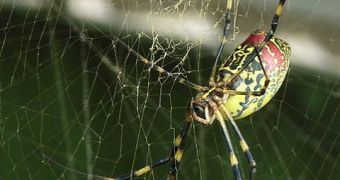Spiders are best known for their ability to create intricate webs. Each species has its own weaving pattern, which it has developed over millions of years of evolution and that is perfectly adapted to its environment. For many years, materials scientists and other experts have been fascinated by the wonderful construct that a spider web thread is. The structure is both very elastic and amazingly strong, and it is also naturally produced.
In a web, the multitude of threads ensures that the unlucky mosquito or butterfly that happenes to fly into the trap does not get out. But it can't do this based on elasticity and strength alone. The active ingredient in the mix is the fact that the wires also stick. As the spider weaves its web, it also produces molecules that adhere to the surface of the threads, and then to the body of anything unfortunate enough to come into contact with it. In essence, scientists explain, the stuff acts like a highly effective form of glue that has evolved to become almost inescapable.
Until now, experts have only been able to determine that the substance used to make the threads sticky is some sort of glycoprotein, a type of complex sugary polymer. But the genetic mechanisms that code for it, and the pathways employed in its production have remained a mystery to science. Now, University of Wyoming in Laramie (UWL) expert Omer Choresh announces, a group of experts has finally managed to make a breakthrough.
The scientists have determined that the sticky mix is being produced through the combined actions of two individual proteins, each of them about 110 amino-acids long. These proteins are apparently regulated by two genes that are located in the same sequence of DNA, only on opposite strands. The method the experts used to reach this conclusion involved extracting messenger RNA (mRNA) from the glands of golden orb-web spiders. Complementary DNA sequences were then created for the nucleic acid, and the genes that may have been in control of the two proteins were then sought after.
In the near future, the experts hope to translate their investigation in the field of medicine. They add that designing sticky surgical sutures that are entirely biodegradable and patient-friendly is one of the first, real-life applications that come to mind. Further details of the discovery and its implications can be found in the publication Biomacromolecules, vol 10, p. 2852, NewScientist reports.

 14 DAY TRIAL //
14 DAY TRIAL //